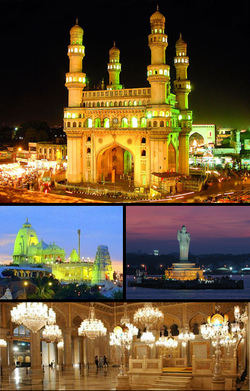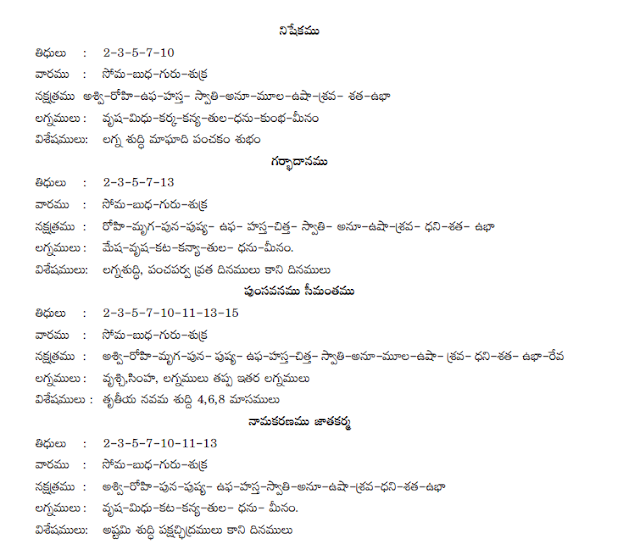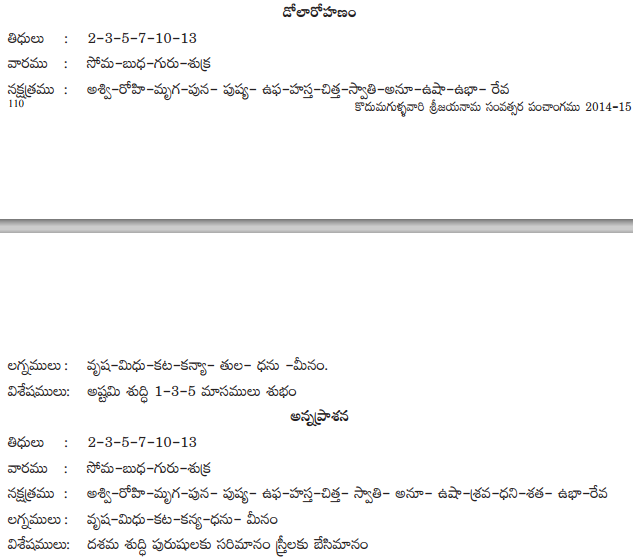Friday 31 July 2015
Types of Ghosts in India
Bhoot: About which one
hears normally and occasionally.
Pret: Those people who
die due to family torture or those whose cremation has not been done properly.
Hadal: The harmless souls.
Chetkin: Witches who
hypnotise people and kill them through accidents.
Mumie: Ghosts prevalent in
certain Mumbai homes
Virikas: Souls hidden in
dense forests and make weird noises.
Mohini: Souls deceived in
love
Shakini: Women who die a few
days after their wedding in an accident become Shakini. These are believed to
be dangerous.
Dakini: Mixture of mohini
and Shakini is Dakini.
Kutti Chetan: Child’s soul
controlled by tantriks.
Brhamodoityas: Prevalent in
Bengal, cursed souls of Brahmins.
Sankodhoktas: Prevalent in
Bengal, head chopped souls of the people killed in train accident.
Nishi: Prevalent in Bengal,
the guiding spirit in the dark.
Kolli Deva: Prevalent in
Karnataka, souls wandering in forests with flashlight in hand.
Kallurti: Prevalent in
Karnataka, modern souls
Kichchin: Prevalent in Bihar,
lust-hungry soul
Pandubba: Prevalent in Bihar,
the souls of dead people drowned in river
Chudail: Prevalent in
northern India, souls hanging from banyan trees and killing passers
Bura Dangoria: Prevalent in Assam,
spirit wearing white dress and turban riding a horse
Baak: Prevalent in Assam,
spirits revolving around lakes
Khabees: Prevalent in
Pakistan, Gulf countries and in Europe, souls related to the family of jinns
Ghoda Pak: Prevalent in Assam
Beera: Prevalent in Assam,
souls that loses their family
Jokhini: Prevalentt in
Assam, spirits that kill men
Puwali Bhoot: Souls that steal
things from houses
Wednesday 29 July 2015
Hindu Scripts
(1). The Vedas, (2). The Upanishads, (3). Puranas, (4). Nyaya, (5). Vaiseshika,
Five Gyan Shastras:
Mimamsa, Brahma-Sutras, Sankhya, Yoga, Dharma-Sastras,
The six scriptures are
(1). Srutis
(2). Smritis
(3). Itihasas
(4). Puranas
(5). Agamas
(6). Darsanas
The four secular writings are:
(1). Subhashitas
(2). Kavyas
(3). Natakas
(4). Alankaras
The Veda is divided into four great books:
(1). The Rig-Veda
(2). The Yajur-Veda
(3). The Sama-Veda
(4). The Atharva-Veda
The Yajur-Veda is again divided into two parts:.
(1). The Sukla Yajur-Veda
(2). The Krishna Yajur-Veda.
Veda consists of four parts:
(1). The Mantra-Samhitas or hymns.
(2). The Brahmanas or explanations of Mantras or rituals.
(3). The Aranyakas (philosophical interpretations of the rituals).
(4). The Upanishads (The essence or the knowledge portion of the Vedas).
(2). Upasana-Kanda The Upasana-Kanda or Worship-Section deals with various kinds of worship or meditation.
(3). Jnana-Kanda. The Jana-Kanda or Knowledge-Section deals with the highest knowledge of Nirguna Brahman. (Nirguna = without attributes or forms. Brahman = the Supreme Reality).
There are two Brahmanas to the Rig-Veda:
(1). The Aitareya
(2). The Sankhayana
The most important Upanishads are :
(1). Isa
(2). Kena
(3). Katha
(4). Prasna
(5). Mundaka
(6). Mandukya
(7). Aitareya
(8). Taittiriya
(9). Chhandogya
(10). Brihadaranyaka
(11). Kaushitaki, and
(12). Svetasvatara and
(13). Maitrayani.
There are four Upa-Vedas or subsidiary Vedas:
(1). The Ayurveda (science of life and health)
(2). The Dhanurveda (science of war)
(3). The Gandharva Veda (science of music)
(4). The Arthasastra (science of polity)
The Vedangas:
There are six Angas or explanatory limbs, to the Vedas:
(1). The Siksha of Maharshi Panini (Phonetics)
(2). Vyakarana of Maharshi Panini (Sanskrit Grammar)
(3). The Chhandas of Pingalacharya (Prosody metre)
(4). The Nirukta of Yaska (Philosophy or etymology)
(5). The Jyotisha of Garga (Astronomy and astrology)
(6). The Kalpas (Srauta, Grihya, Dharma and Sulba) belonging to the authorship of various Rishis.
The Pratishakhyas, Padapathas, Kramapathas, Upalekhas, nukramanis, Daivatsamhitas, Parisishtas, Prayogas, Paddhatis, Karikas, Khilas, and Vyuhas are further elaborations in the rituals of the Kalpa Sutras.
Among the Kalpa Sutras, the
(1). Asvalayana, (2). Sankhayana and the (3). Sambhavya belong to the Rig-Veda.
(1). The Mashaka, (2). Latyayana, (3). Drahyayana, (4). Gobhila and (5). Khadira belong to the Sama-Veda.
(1). The Katyayana and (2). Paraskara belong to the Sukla Yajur Veda.
(1). The Apastamba, (2). Hiranyakesi, (3). Bodhayana, (5). Bharadvaja, (6). Manava, (7). Vaikhanasa and the (8). Kathaka belong to the Krishna Yajur-Veda.
(1). The Vaitana and the (2). Kaushika belong to the Atharva-Veda.
There are four books of Itihahas:
(1) The Valmiki-Ramayana
(2). The Yogavasishtha
(3). The The Ramayana (4). The Mahabharata
The Puranas are of the same class as the Itihasas. They have five characteristics (Panch-Lakshana):
(1). History
(2). Cosmology ( with various symbolical
(3). illustrations of philosophical principles)
(4). Secondary creation
(5). Genealogy of kings Manavantaras
The Eighteen Puranas:
(1). Vishnu Purana
(2). Naradiya Purana
(3). Srimad Bhagavata Purana
(4). Garuda (Suparna) Purana
(5). Padma Purana,
(6). Varah Purana
(7). Brahma Purana
(8). Brahmanda Purana
(9). Brahma Vaivarta Purana
(10). Markandeya Purana
(11). Bhavishya Purana
(12). Vamana Purana
(13). Matsya Purana
(14). Kurma Purana
(15). Linga Purana, (16). Siva Purana
(17). Skanda Purana and
(18). Agni Purana. Of these, six are Sattvic Puranas and glorify Vishnu; Six are Rajasic Puranas and glorify Brahma; six are Tamasic Puranas and glorify Siva. The Upa-Puranas: The eighteen Upa-Puranas are: SanatKumara, Narasimha, Brihannaradiya, Sivarahasya, Durvasa, Kapila, Vamana, Bhargava, Varuna, Kalika, Samba, Nandi, Surya, Parasara, Vasishtha, Devi-Bhagavata, Ganesa and Hamsa.
The Agamas:
(1). Jnana or Knowledge
(2). Yoga or Concentration
(3). Kriya or Esoteric Ritual
(4). Charya or Exoteric Worship
The Agamas are divided into three sections:
(1). The Vaishnava
(2). The Saiva
(3). The Sakta The Vaishnava Agamas, The Saiva Agamas, The Sakta Agamas
The Shad-Darsana (the six schools of philosophy) or the Shat-Sastras are:
(1). The Nyaya founded by Gautama Rishi
(2). The Vaiseshika by Kanada Rishi
(3). The Sankhya by Kapila Muni
(4). The Yoga by Patanjali Maharshi
(5). The Purva Mimamsa by Jaimini
(6). The Uttara Mimamsa or Vedanta by Badarayana or Vyasa
There are hundreds of other scriptures. These are just some of them.
Five Gyan Shastras:
Mimamsa, Brahma-Sutras, Sankhya, Yoga, Dharma-Sastras,
The six scriptures are
(1). Srutis
(2). Smritis
(3). Itihasas
(4). Puranas
(5). Agamas
(6). Darsanas
The four secular writings are:
(1). Subhashitas
(2). Kavyas
(3). Natakas
(4). Alankaras
The Veda is divided into four great books:
(1). The Rig-Veda
(2). The Yajur-Veda
(3). The Sama-Veda
(4). The Atharva-Veda
The Yajur-Veda is again divided into two parts:.
(1). The Sukla Yajur-Veda
(2). The Krishna Yajur-Veda.
Veda consists of four parts:
(1). The Mantra-Samhitas or hymns.
(2). The Brahmanas or explanations of Mantras or rituals.
(3). The Aranyakas (philosophical interpretations of the rituals).
(4). The Upanishads (The essence or the knowledge portion of the Vedas).
(2). Upasana-Kanda The Upasana-Kanda or Worship-Section deals with various kinds of worship or meditation.
(3). Jnana-Kanda. The Jana-Kanda or Knowledge-Section deals with the highest knowledge of Nirguna Brahman. (Nirguna = without attributes or forms. Brahman = the Supreme Reality).
There are two Brahmanas to the Rig-Veda:
(1). The Aitareya
(2). The Sankhayana
The most important Upanishads are :
(1). Isa
(2). Kena
(3). Katha
(4). Prasna
(5). Mundaka
(6). Mandukya
(7). Aitareya
(8). Taittiriya
(9). Chhandogya
(10). Brihadaranyaka
(11). Kaushitaki, and
(12). Svetasvatara and
(13). Maitrayani.
There are four Upa-Vedas or subsidiary Vedas:
(1). The Ayurveda (science of life and health)
(2). The Dhanurveda (science of war)
(3). The Gandharva Veda (science of music)
(4). The Arthasastra (science of polity)
The Vedangas:
There are six Angas or explanatory limbs, to the Vedas:
(1). The Siksha of Maharshi Panini (Phonetics)
(2). Vyakarana of Maharshi Panini (Sanskrit Grammar)
(3). The Chhandas of Pingalacharya (Prosody metre)
(4). The Nirukta of Yaska (Philosophy or etymology)
(5). The Jyotisha of Garga (Astronomy and astrology)
(6). The Kalpas (Srauta, Grihya, Dharma and Sulba) belonging to the authorship of various Rishis.
The Pratishakhyas, Padapathas, Kramapathas, Upalekhas, nukramanis, Daivatsamhitas, Parisishtas, Prayogas, Paddhatis, Karikas, Khilas, and Vyuhas are further elaborations in the rituals of the Kalpa Sutras.
Among the Kalpa Sutras, the
(1). Asvalayana, (2). Sankhayana and the (3). Sambhavya belong to the Rig-Veda.
(1). The Mashaka, (2). Latyayana, (3). Drahyayana, (4). Gobhila and (5). Khadira belong to the Sama-Veda.
(1). The Katyayana and (2). Paraskara belong to the Sukla Yajur Veda.
(1). The Apastamba, (2). Hiranyakesi, (3). Bodhayana, (5). Bharadvaja, (6). Manava, (7). Vaikhanasa and the (8). Kathaka belong to the Krishna Yajur-Veda.
(1). The Vaitana and the (2). Kaushika belong to the Atharva-Veda.
There are four books of Itihahas:
(1) The Valmiki-Ramayana
(2). The Yogavasishtha
(3). The The Ramayana (4). The Mahabharata
The Puranas are of the same class as the Itihasas. They have five characteristics (Panch-Lakshana):
(1). History
(2). Cosmology ( with various symbolical
(3). illustrations of philosophical principles)
(4). Secondary creation
(5). Genealogy of kings Manavantaras
The Eighteen Puranas:
(1). Vishnu Purana
(2). Naradiya Purana
(3). Srimad Bhagavata Purana
(4). Garuda (Suparna) Purana
(5). Padma Purana,
(6). Varah Purana
(7). Brahma Purana
(8). Brahmanda Purana
(9). Brahma Vaivarta Purana
(10). Markandeya Purana
(11). Bhavishya Purana
(12). Vamana Purana
(13). Matsya Purana
(14). Kurma Purana
(15). Linga Purana, (16). Siva Purana
(17). Skanda Purana and
(18). Agni Purana. Of these, six are Sattvic Puranas and glorify Vishnu; Six are Rajasic Puranas and glorify Brahma; six are Tamasic Puranas and glorify Siva. The Upa-Puranas: The eighteen Upa-Puranas are: SanatKumara, Narasimha, Brihannaradiya, Sivarahasya, Durvasa, Kapila, Vamana, Bhargava, Varuna, Kalika, Samba, Nandi, Surya, Parasara, Vasishtha, Devi-Bhagavata, Ganesa and Hamsa.
The Agamas:
(1). Jnana or Knowledge
(2). Yoga or Concentration
(3). Kriya or Esoteric Ritual
(4). Charya or Exoteric Worship
The Agamas are divided into three sections:
(1). The Vaishnava
(2). The Saiva
(3). The Sakta The Vaishnava Agamas, The Saiva Agamas, The Sakta Agamas
The Shad-Darsana (the six schools of philosophy) or the Shat-Sastras are:
(1). The Nyaya founded by Gautama Rishi
(2). The Vaiseshika by Kanada Rishi
(3). The Sankhya by Kapila Muni
(4). The Yoga by Patanjali Maharshi
(5). The Purva Mimamsa by Jaimini
(6). The Uttara Mimamsa or Vedanta by Badarayana or Vyasa
There are hundreds of other scriptures. These are just some of them.
Tuesday 28 July 2015
Ananya Centre for Special Children Hyderabad
Ananya Centre for Special Children
Ananya Centre for Special Children was started by PRAVARA Educational Trust in April 2008. Ananya is a Learning Centre for Children with Special Needs especially children on Autism Spectrum Disorder (ASD). It is a non-profit organisation which provides services to people who cannot afford special education for their children.
- Provides a safe learning environment for all the children.
- Facilitates learning by creating an individualised education plan (IEP) for each of its students.
- Children get the attention they need either in 1:1 sessions or in small group sessions.
- Children get to learn the 'Visual' way.
- A lot of work is done on improving language, comprehension behaviour and social skills.
- The Extra Lesson™ Therapy is done to help children with learning and behavioral difficulties on a 1:1 basis with a professionally trained Extra Lesson™ Practitioner.
- iLs programs (Integrated Listening System) is done to help children with attention and auditory processing difficulties.
We have a great team of dedicated Teachers, Educational Psychologist, Speech Therapist, Occupational Therapist, iLS Practitioner, Extra Lesson™ Therapist and Nutritionist.
Contact us:
Address
ASAP (Autism Society of Andhra Pradesh)
Ananya Centre for Special ChildrenLane 4, Street 4, 1‐2‐593/26/A, Gagan Mahal
Hyderabad ‐500 029
Phone : +91+40-64502596
Mobile : +91-98485 13192
Please call between 9 AM and 5 PM
Address
ASAP (Autism Society of Andhra Pradesh)
Ananya Centre for Special ChildrenLane 4, Street 4, 1‐2‐593/26/A, Gagan Mahal
Hyderabad ‐500 029
Phone : +91+40-64502596
Mobile : +91-98485 13192
Please call between 9 AM and 5 PM
Sunday 26 July 2015
New Autism resources
Saturday 25 July 2015
Thursday 23 July 2015
Surya Worship
Worshipping the sun with faith and belief everyday results in
the person to become the ruler of many powers. This results in him getting
social success in his life. Know the benefits of Surya (sun) puja here.
1.
Sun devotee finds amazing
mental, physical and practical endurance that overcomes every conflict.
2.
Sun worshipping makes one
fearless and heroic.
3.
It makes service minded
and philanthropic.
4.
Sun worshipping makes one
a scholar, master of pithy with effective voice and intelligent.
5.
It provides gentle and
pious demeanor.
6.
Sun devotion removes ego,
anger, greed, desire, treachery and evil thoughts from a person’s mind.
The first ray of sun inspires for early success daily.
Worshipping sun everyday and especially on Sundays by chanting this mantra
leads to all pleasures, good health and wealth in life.
Wear clean clothes after the morning shower. Fill fresh water in
a copper container. Add Ashtagandh, red flowers and Akshat in the water and
chant this mantra: ऊँ सूर्याय नम:
While chanting the mantra, offer the holy water to the sun.
worship
the idol of sun in a temple and offer jiggery in Prasad. Follow this with aartihow to get good marks
Vidmahe Srswtya.
Dhimahi Brhmputrya.
Tnno Prchodayat
This will get you good scores in your exams
Laughing buddha
Usually when people refer to ‘The Buddha’ they are speaking of
Siddhartha Gautama, an Indian prince who became the founder
of Buddhism in 520 B.C.E.
Interestingly, however, the Laughing Buddha is not the same as
Siddhartha Gautama. Rather, the character is thought to be based on an
historical Chinese Buddhist monk who lived more than 1,000 years ago. Despite
the fact that the Laughing Buddha is not the Gautama Buddha, there still is a
link between these two Buddhas as some strings of Buddhism regard the Laughing
Buddha as an earlier incarnation of the Maitreya Buddha who is predicted to
succeed Siddhartha Gautama to become the next Buddha in a future age.
The
celestial Buddha named Hotei or Pu-Tai is best known as the jolly Laughing
Buddha. In China, he is known as the loving or friendly one. He is based on an
eccentric Chinese Ch’an (Zen) monk who lived over 1,000 years and has become a
significant part of Buddhist and Shinto culture. Because of this monk’s
kind and generous nature, he came to be regarded as an incarnation of
Bodhisttava who will be Maitreya (the future Buddha). His large
protruding stomach and jolly smile have given him a common designation
‘Laughing Buddha’. One can always see him carrying a sac, which is
always filled with some precious things. He’s patron of weak, poor and children. According
to a legend, if one rub’s the belly of Laughing Buddha, it brings forth wealth,
good luck and prosperity. Hotei is also referred to as the patron
saint of restaurateurs, fortunetellers and bartenders. When one over eats or
over drinks, friends jokingly attribute it to the Laughing Buddha’s influence. Images
of Laughing Buddha can be seen gracing various amulets, temples and
restaurants. The kind and generous Buddha is also regarded as deity of
abundance and contentment. It is also a commonly held belief
that the Laughing Buddha figurine can absorb negative energy and emanate positive
energy
Purchasing a Laughing Buddha statue, experts agree that due care
must be given to the placement of the statue in your home or business.
According to Feng Shui theory, for instance, the ideal placement for the Laughing Buddha statue in your home is directly opposite the main door in the living room. This way, the Buddha will be the first thing a person sees as he enters his house. Additionally, it is said that the Laughing Buddha should be positioned on an elevated surface, since placing it directly on the ground would be considered a sign of disrespect.
According to Feng Shui theory, for instance, the ideal placement for the Laughing Buddha statue in your home is directly opposite the main door in the living room. This way, the Buddha will be the first thing a person sees as he enters his house. Additionally, it is said that the Laughing Buddha should be positioned on an elevated surface, since placing it directly on the ground would be considered a sign of disrespect.
Subscribe to:
Posts (Atom)













































